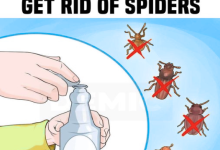Using humidity drawers correctly will not only free up space throughout the fridge but will also help prolong the life of your produce. Here’s how to use these refrigerator drawers properly — and what to store in them.
How Do Refrigerator Crisper Drawers Work?

Most humidity drawers are adjustable with a few clicks between low and high. These settings simply open or close a window in the drawer. For the low humidity setting, the window is completely open; for the high humidity setting, it is completely closed.
What Should Go in Each Drawer?

The general rule of thumb is to put things that tend to rot in a drawer with a low-humidity setting. This includes fruits and veggies that emit ethylene gas, like apples and pears, because leaving the window open on the drawer gives those gases a chance to escape. When the gases are released, it helps keep the fruits and vegetables from rotting prematurely.
Things that wilt go in the high-humidity drawer. This will be all your leafy greens, like arugula, spinach, and herbs. By having the window closed, water vapor is held in the drawer and the moisture keeps the greens crisper and fresher longer. Keeping fruits and vegetables that are sensitive to ethylene gas, like strawberries, in this drawer will also keep them away from ethylene producers.
Here’s a handy list of what common fruits and vegetables should be kept in each drawer.

High-Humidity Drawer
The high-humidity drawer should contain the following:
- Produce sensitivity to moisture loss.
- Produce sensitive to ethylene gas.
Fruits and Vegetables to Keep in the High-Humidity Drawer
- Bananas (unripe)
- Belgian endive
- Broccoli
- Brussels sprouts
- Cabbage
- Carrots
- Cauliflower
- Cucumbers
- Eggplant
- Green beans
- Herbs (cilantro, dill, parsley, thyme)
- Leafy greens (kale, lettuces, spinach, Swiss chard, watercress)
- Okra
- Peas
- Peppers
- Strawberries
- Summer squash
- Watermelon

Low-Humidity Drawer
The low-humidity drawer should contain the following:
- Produce not sensitive to moisture loss.
- High-ethylene gas producers.
Fruits and Vegetables to Keep in the Low-Humidity Drawer
- Apples
- Avocados
- Bananas (ripe)
- Cantaloupes
- Figs
- Honeydew melons
- Kiwis
- Mangoes
- Papayas
- Pears
- Plantains
- Stone fruits (apricots, nectarines, peaches, plums)
Finally, the drawers work best if they are at least two-thirds full, and we like to think of it as good motivation to have a supply of healthy foods around!
Understanding humidity settings, knowing what is sensitive to ethylene, and knowing which things produce ethylene will help you properly store your fruits and veggies and extend their shelf lives. Once you get the hang of it, you’ll appreciate how useful this information really is!







